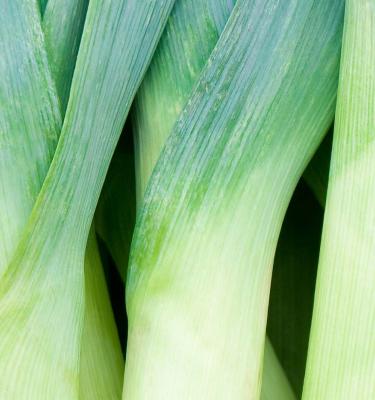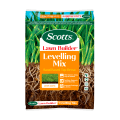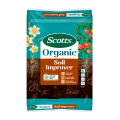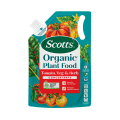

How to grow & care for Leeks
Leeks are a sweet and mild member of the onion family. They thrive in cold and warm temperate climates but can be planted in autumn or winter in all regions of Australia.
Leeks are a slow-growing, yet easy crop to grow. You can begin harvesting them as baby leeks when they are the thickness of spring onion or leave them longer to fatten up.
Hilling up the soil around your leeks as they grow will blanch the lower stems. This isn’t a necessary process but if you’d like longer tender white sections on your leeks it’s recommended.
Top 4 steps to growing leeks
- Choose a full sun position in your garden or grow Leeks in pots
- Improve the soil before planting by adding compost or Scotts Performance Naturals™ Organic Based Soil Improver
- For a head start on leeks plant them as seedlings, seeds add another 4-6 weeks to your time before harvest
- Hill the soil around leeks to blanch their lower stems. This blanching process gives a longer white section on your leeks.
Shopping List
- Leek seeds or seedlings
- Scotts Performance Naturals™ Organic Based Soil Improver
- Scotts Performance Naturals™ All Purpose Organic Based Fertiliser
- If growing in pots, Scotts Performance Naturals™ Premium Potting Mix
- If growing from seeds, Scotts Osmocote® Seed & Cutting Potting Mix
- Garden trowel
- Defender™ Snail & Slug Pellets
Prepare
Leeks can be grown from seeds or seedlings, in a full sun spot. Leeks are best grown in soil enriched with Scotts Performance Naturals™ Organic Based Soil Improver and a small amount of Scotts Performance Naturals™ All Purpose Organic Based Fertiliser - dig these through the top 10-20cm of soil before planting.
In all regions, it’s best to plant leeks in autumn and winter and yes, they will tolerate frosts.
Planting in the garden
Plant leek seedlings 10cm apart in trenches that are 30cm apart. As you back fill the trenches don’t panic about trying to stand the tiny, thin leek seedlings up - they will correct themselves in no time.
Protect small seedlings from slugs and snails using Defender™ Snail & Slug Pellets.
Gradually “hill up” or push up the soil around the lower section of the leek as they grow taller. This is called “blanching” - it will keep the lower section of the leek softer and whiter.
If you don’t want to blanch the stems, that’s completely fine too - instead lightly mulch around the leeks with an open organic mulch to retain moisture.
Growing Leeks from seeds
Sow leek seeds by sprinkling them onto the surface of Scotts Osmocote® Seed & Cutting Potting Mix in punnets. Cover lightly with more potting mix. Don’t worry if the seeds germinate too closely together - they can be gently separated as you plant them into the garden.
Keep the soil moist while the leeks seeds germinate which will take 7-14 days and they can be transplanted into your garden or larger pots to finish growing when the seedlings are about 10-15cm long - which will be about 4-6 weeks from sowing.
Planting in pots
Leeks can be grown in medium to large pots that are 30-40cm deep. Fill the pot with Scotts Performance Naturals™ Premium Potting Mix and plant seedlings 10cm apart.
Protect young leek seedlings as they sprout from slugs and snails with Defender™ Snail & Slug Pellets.
Hill up the soil around the base of your leeks to blanch the lower part of the stalk or mulch around leek plants to retain moisture.
Harvest
Leeks can begin to be harvested once they are the thickness of a pencil or small spring onion. These skinny leeks are a favourite of chefs and often called “baby leeks”. If you’d prefer the traditional thicker leeks leave the plants to continue growing.
To harvest leeks grasp the stalk just above ground level and pull, if needed use a fork to loosen the soil - but take care not to pierce the stalks of the surrounding leeks that you want to remain in the soil.

Pests & Diseases
Slugs and Snails will cause unsightly damage to leeks leaves. Protect your leek crop by setting beer traps (saucers filled with beer) or use Defender™ Snail & Slug Pellets.



